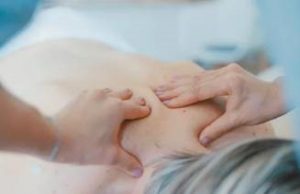
You may have just started or returned back to exercise and feeling really tender and sore after a workout, to the point where you might not be able to sit on the toilet seat!! Ahhhhh. What’s this all about? Well, it’s called DOMS or Delayed-Onset Muscle Soreness.
What is DOMS?
Delayed-Onset Muscle Soreness is exercise-related muscle pain. It develops when we use our muscles in a different way to what our body is used to. So, after excessive and/or unaccustomed exercise, such as when you lift heavier weights; or when you change up the intensity/repetition of exercise that you do; or when you are trying new exercises with different range of motion.
What Causes DOMS?
DOMS is caused by small muscle tears or strains which results in an inflammatory response leading to stiffness and tenderness. These small tears are nothing to be alarmed about but are quite normal until our body adapts to any changes in movement.
What are the Symptoms of DOMS?
The classic DOMS symptoms are a dull muscle ache that develops 24 to 48 hours after the performance of a new or strenuous exercise. It is localised to the involved muscles and will result in muscle stiffness plus tenderness.
DOMS can also result in a short-term loss of muscle strength, a reduced joint range of motion and possibly swelling of the affected muscle groups.
What is DOMS Treatment?
DOMS should be treated initially with active rest and anti-inflammatory measures such as ice straight after exercise and heat several hours after exercise.
Gentle massage using a foam roller and gentle stretching can also help relieve soreness.
How Can You Prevent DOMS?
To minimise DOMS consider the following:
- Take it slow and gradually build up the amount of exercise you do – don’t go too hard too fast!!
- Only increase your sets, repetitions and weights by more than 10% per week.
- Ensure you build in recovery days in between your training sessions and get plenty of sleep.
- Ensure you do a thorough cool down following your workout, including foam rolling and static stretches.
- Try to eat well, especially protein post workout to help with muscle repair (we will talk about this in an upcoming blog).
- Try supplementing with Magnesium or Branched Chain Amino Acids (BCAAs) as these can also assist with soreness and muscle recovery.
The Verdict?
Well, the good news is that once you start moving your sore muscles they will actually start to feel less sore, with most cases of DOMS subsiding after 1-3 days with no lasting effects. However if you experience continued excessive sharp pain more than 48 hours after exercise and it doesn’t feel any better with time, or you feel as though the pain is in the joints, not the muscles, or if there is swelling and discomfort around the joints, then it is best to seek the advice of a physiotherapist or other appropriate allied health professional.

